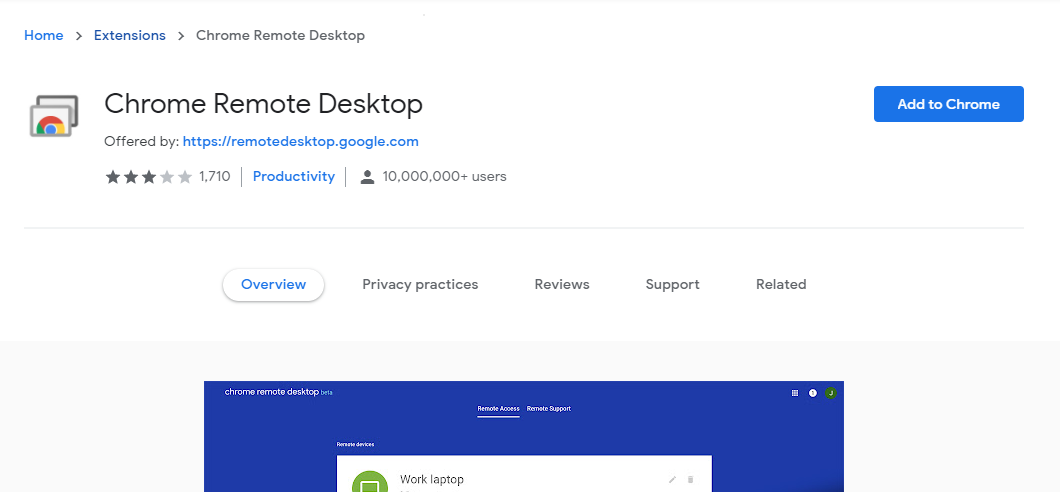In today’s digital age, remote access to computers has become increasingly essential. Whether you need to provide technical support to a family member or access your work computer while on the go, being able to control your PC remotely can save you time and effort. One popular tool for remote computer access is Google Chrome Remote Desktop. In this comprehensive guide, we will walk you through the process of setting up and using Chrome Remote Desktop to take control of another computer.
What is Chrome Remote Desktop?
Chrome Remote Desktop is a free remote access tool developed by Google. It allows you to securely connect to and control another computer over the internet. With Chrome Remote Desktop, you can view the remote computer’s screen, interact with its applications, and even transfer files between the two computers. The tool is available for various platforms, including Windows, Mac, Linux, and Chrome OS, as well as mobile devices running iOS and Android.
Setting Up Chrome Remote Desktop
Before you can start using Chrome Remote Desktop, you’ll need to set it up on both the computer you want to access remotely (the host) and the computer or mobile device you’ll use to connect (the client). Here’s how to get started:
Step 1: Install Chrome Remote Desktop
- On the computer you want to access remotely, open your Chrome browser.
- Go to the Chrome Web Store and search for “Chrome Remote Desktop.”
- Click on the “Add to Chrome” button to install the Chrome Remote Desktop extension.
- Follow the onscreen instructions to complete the installation.
Step 2: Enable Remote Access
- Open a new tab in Chrome and type “remotedesktop.google.com/access” in the address bar.
- Click on the “Set up Remote Access” button.
- Follow the prompts to grant the necessary permissions and set up a PIN for remote access.
- Once the setup is complete, Chrome Remote Desktop will be enabled on your computer.
Step 3: Install Chrome Remote Desktop on the Client Device
- On the computer or mobile device you’ll use to connect to the remote computer, open your Chrome browser.
- Go to the Chrome Web Store and search for “Chrome Remote Desktop.”
- Click on the “Add to Chrome” button to install the Chrome Remote Desktop app.
- Follow the onscreen instructions to complete the installation.
Accessing Another Computer with Chrome Remote Desktop
Now that you have Chrome Remote Desktop set up on both the host and client devices, you’re ready to start accessing another computer remotely. Here’s how to do it:
Method 1: Temporary Access
If you only need temporary access to another computer, such as providing remote support to a friend or family member, follow these steps:
- Open your Chrome browser on the client device.
- Type “remotedesktop.google.com/access” in the address bar and press Enter.
- Click on the “Access” button and select the computer you want to connect to from the list.
- Enter the PIN you set up during the remote access setup process.
- Click the arrow button to connect to the remote computer.
Method 2: Permanent Access
If you need regular or ongoing access to another computer, such as accessing your work computer from home, follow these steps to set up permanent access:
- Open your Chrome browser on the client device.
- Type “remotedesktop.google.com/support” in the address bar and press Enter.
- Click on the “Get Support” button and download the Chrome Remote Desktop app if you haven’t already.
- Follow the onscreen instructions to install the app.
- Under the “Get Support” section, click on “Generate Code” to generate a unique access code.
- Share the access code with the person who will be accessing your computer remotely.
- When the other person enters the access code on the site, you’ll receive a notification with their email address.
- Click on “Share” to allow them full access to your computer.
Using Chrome Remote Desktop on Mobile Devices
Chrome Remote Desktop is not limited to computers. You can also use it on your mobile devices to access remote computers. Here’s how:
- Download and install the Chrome Remote Desktop app from the App Store (iOS) or Google Play Store (Android).
- Open the app and sign in with your Google account.
- Tap on the computer you want to access from the list.
- Enter the PIN for the remote computer.
- Tap the arrow button to connect and start controlling the remote computer.
Tips for Using Chrome Remote Desktop
Here are some additional tips to enhance your experience with Chrome Remote Desktop:
1. Ensure a Stable Internet Connection
To avoid lag or disconnections during remote access sessions, make sure both the host and client devices have a stable internet connection. A high-speed connection is recommended for the best performance.
2. Use Security Measures
To protect your privacy and prevent unauthorized access, use strong and unique PINs for remote access. Additionally, keep your devices and Chrome browser up to date with the latest security patches.
3. Customize Your Remote Desktop Session
If you prefer a specific desktop environment when connecting to a remote computer, you can customize your virtual desktop session. Follow these steps:
- Find the .desktop file for your preferred desktop environment in
/usr/share/xsessions/. - Create a file called
.chrome-remote-desktop-sessionin your home directory. - Edit the file and include the command to start the session, such as
exec /etc/X11/Xsession 'gnome-session --session=cinnamon'. - Save the file and restart the Chrome Remote Desktop host.
4. Troubleshooting Tips
If you encounter any issues with Chrome Remote Desktop, try these troubleshooting tips:
- Check your internet connection and network settings.
- Ensure your antivirus software allows Chrome Remote Desktop traffic.
- Verify that your work or school network permits remote access.
- Make sure you’re using the latest version of Chrome or Chrome OS.
Explore Other Remote Access Options
While Chrome Remote Desktop is a convenient and user-friendly remote access tool, it’s not the only option available. Depending on your needs and preferences, you may also consider other tools such as Windows Remote Desktop or screen-sharing features built into operating systems like macOS. Explore different options to find the one that best suits your requirements.
Conclusion
Controlling your PC remotely using Chrome Remote Desktop is a powerful and convenient way to access your computer or provide support to others. With its easy setup process and user-friendly interface, Chrome Remote Desktop makes remote access accessible to both tech-savvy users and beginners. Whether you’re working from home, helping a family member troubleshoot computer issues, or accessing files on the go, Chrome Remote Desktop offers a reliable solution. Start using Chrome Remote Desktop today and experience the freedom of remote computer access.
Experiencing difficulties with your Device, check out our “How To” page on how to resolve some of these issues.






1 comment